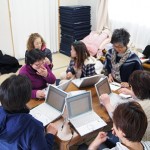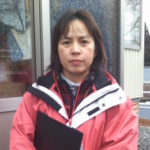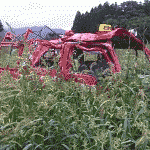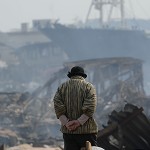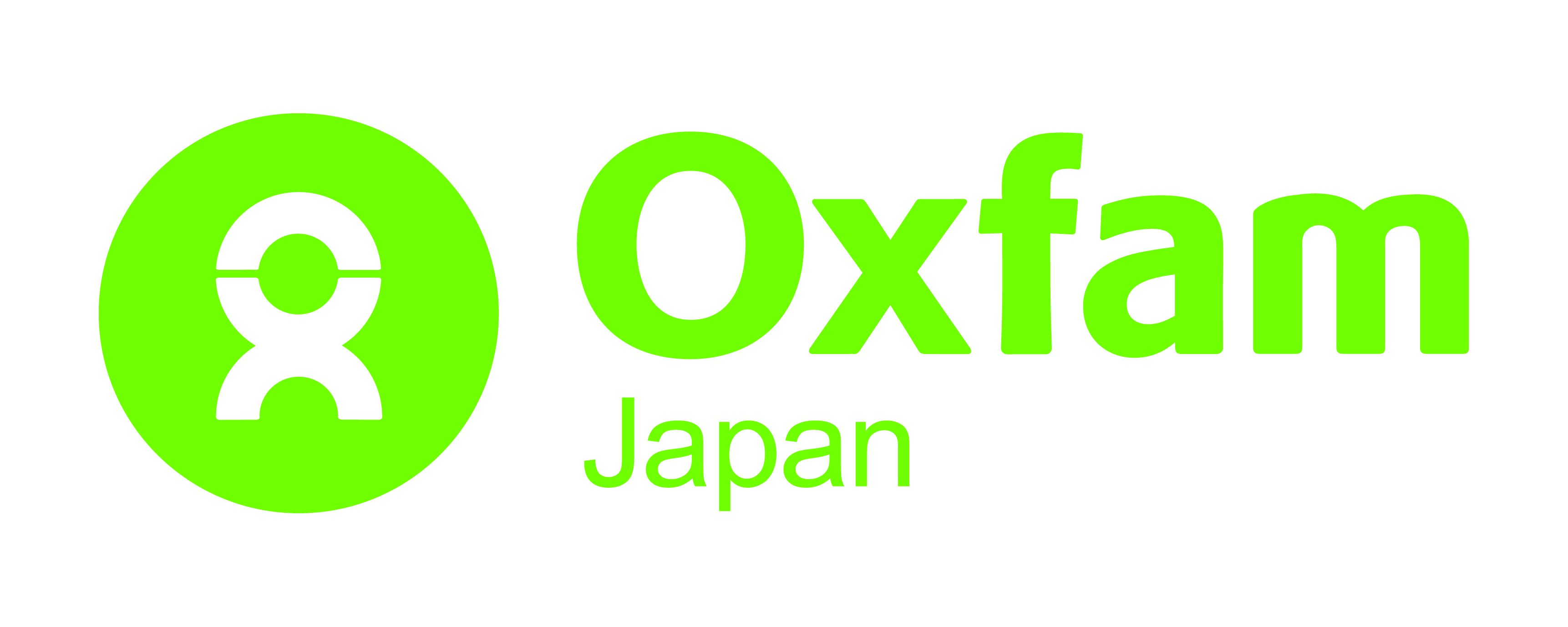English
Women’s Network for East Japan Disaster (Rise Together) first published Integrating Gender and Diversity Perspectives into Disaster Response: The Support We Wanted! A Collection of Good Practice in Disaster Response based on the East japan Disaster in Japanese in June 2012. Now the English version is available. The booklet was used as a training material in more than 40 gender and disaster training sessions during last one year in Japan.
This booklet collects examples of disaster response activities undertaken by various organizations in, and after, the East Japan Disaster. It aims to provide advice for people without expertise to be able to provide effective assistance to each affected person with better consideration of diverse needs, and for disaster response workers and volunteers to be able to undertake their activities comfortably. We also aim that these examples will be used as an information package for a revision of local disaster prevention plans and/or for daily disaster prevention activities.
Each good practice example indicates which situations and who this should refer to according to a “phase” of disaster cycle and a “target audience” such as person working for government/administration, community-based organizations, voluntary organizations, and individual volunteer, as a guide for the application.
The English version provides with additional information on unique Japanese systems such as kasetsu jutaku (temporary housing community) and chonaika (residents association).
■PDF Download free
Azusa Yamashita
The Great East Japan Disaster on 11 March 2011 caused death to an incredible number of people with many more still missing,1 destroyed a huge amount of properties, and displaced numerous communities. On top of this there were gender-insensitive and gender-unequal evacuations, relief and reconstruction processes2 that added further damage. But equally shocking was the dearth of information about and voices of different groups of so-called social minorities such as people with disabilities, non-Japanese speaking residents, children, the elderly, and those who are lesbian, bisexual, gay and transgender (LGBT). 続きを読む…
Kate O` berg, 23, is from Oregon but is living in Minamisoma for the past two months working as English teacher and Cultural Ambassador in the nuclear affected city. The young woman arrived as a volunteer after the natural disaster occurred in March 2011 and was so touched by the courage and commitment shown by the people around her that she decided to do more than be a temporary helper. 続きを読む…
Rise Together: Women’s Network for East Japan Disaster helped the United Nations Information Centre in Japan put together the article.
Masako Tanaka, one of the members of the Network was interviewed in this article.
After a series of workshops on the importance of effective communication from women in disaster areas in Tohoku, the Rise Together Media Team reached its first goal—completed short reports written neatly and accompanied with photos– in February. In fact, there were a lot of “First Time” achievements to mark the first anniversary of the Great East Japan Disaster that struck the northeastern coasts on March 11, 2011.
続きを読む…
Mari Miura is Filipina and lives in Minami Sanriku, a snowy coastal town famous for its oysters and seaweed in Miyagi-prefecture. The town of almost 18,000 people was hit by massive tsunami following the 9.0 powerful earthquake on the Japanese scale that hit the northern areas of Japan on March 11.
Mari escaped with her Japanese mother-in-law that fateful afternoon. They later were reunited with the family Her Japanese husband and father-in-law who were out at sea, survived miraculously. Their three children were safe in school. “It was a terrible disaster. I thought I would never see my husband and father-in-law who were swept away in their boat. People around me were telling me to be strong and look after the family if I was going to live alone. I prayed to God to save my family,” she recalled in an interview.
続きを読む…
Six months have passed since the disaster. During the past five months since we launched our post-disaster support action, we have delivered to the evacuation shelters tea, handicrafts, hand massage and manicure services, along with various other gifts full of care from people across the country.
It has been half a year, come to think of it.
Fukushima still suffers from the massive scars inflicted by the earthquake, tsunami and radiation. Today, many people live one day at a time with both hopes for future and concerns weighing heavily on their shoulders.
Even after six months, the fear lingers in our hearts: We don’t know how much the invisible radiation is harming our health and environment. We may not put it in words, but it’s there with us, day and night.
続きを読む…
Background
Since the magnitude 9.0 great earthquake hit eastern Japan on March 11, large volumes of financial assistance have been pledged to the devastated region from within and outside of the country. Not only the central government, but local governments, communities and businesses have extended support, as well as domestic and overseas non-governmental and non-profit organizations. Having lost more than 20,000 lives with more missing, homes and offices, the people affected by the earthquake and the tsunami need extended relief aid and reconstruction assistance to deal with an unprecedented scale of devastation. The needs of the survivors vary according to a wide range of age, gender, sexual orientation, disabilities, ethnicities, family relationships and employment. We cannot and should not leave the responsibility of recovery only up to local support groups. Instead, the survivors need a wide range of support including hands-on help from as many experts as possible.
Women who survived the disaster face a particular aspect of the disaster-led hardships, which may violate their basic human rights. We must deal with issues related to their individual needs, both physical and mental, child-rearing, caring for family members, physical and psychological abuse, employment, insurance and housing. Despite the urgent need to develop a gender-based perspective in the recovery process, we see there is no proper system to address this need in Japan.
The Cabinet Office has issued guidelines on how to better meet the needs of vulnerable people in the devastated region, based on lessons learned from the 1995 Great Hanshin Earthquake. However, the guidelines still lack follow-up measures, and they are not reinforced. This project is, thus, aimed at fulfilling the lack of female representation in every aspect of life.
Concept
Vision
Human rights of the women who survived the Great East Japan Earthquake are respected.
Mission
To respond to and best fulfill the needs of the women survivors in the Great East Japan
Earthquake;
To help create opportunities where women can initiate some of the reconstruction efforts;
To promote gender sensitivity in the main stream society.
Target
Scope of activities
To ensure psychological and physical safety and security of the women involved in assisting women survivors (Preventing violence and follow-up care)
To ensure livelihood of women survivors through employment and compensation (Information, consultation, lobbying for policy reforms)
To improve housing and living environment for women survivors (Evacuation centers, temporary housing, encouraging participation in community rebuilding)
To improve medical, hygiene, welfare services in devastated region
To strengthen media relations of women survivors and their support groups
Organization
Rise Together for Women in East Japan Disaster (Rise Together) is to help women, especially survivors of the disaster, play an active role in Tohoku’s reconstruction efforts by advocating and lobbying for measures and policies that respond to their particular needs at best. This is done by gathering data and voices of women through researches and by informing the public, as well as the government, of our findings. The group set up a council and overseers to maintain accountability in carrying out its projects.
Members
Board
Akiko Nakajima (Wayo Women’s University)
Mieko Takenobu (Wako University)
Chieko Akaishi (Women’s Democratic Journalfemine)
Reiko Masai (Women’s Net Kobe)
Noriko Seyama (Asia Japan Women’s Resource Centre)
Yukiko Tsunoda (NPO Center for Education and Support for Women)
Azusa Yamashita (Office for Gender Equality, Iwate University, National University Corporation)
Che Seon Ae (Pianist)
Steering Committee
Tomoko Endo (National Women’s Shelter Net)
Tomoko Yunomae (Japan Accountability Caucus for the Beijing Conference)
Chie Matsumoto (Journalist)
Masako Tanaka (Asia Japan Women’s Resource Centre)
